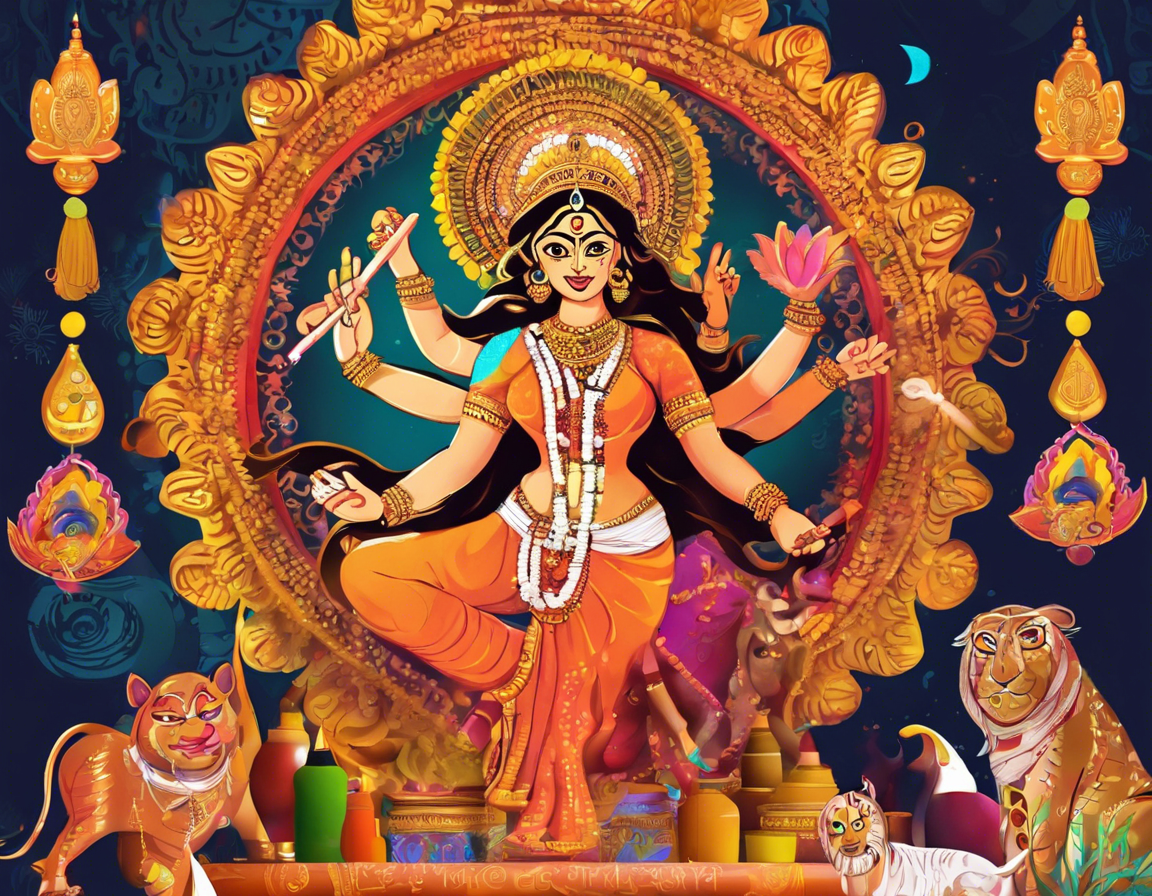Durga Puja 2022: Celebrating the Goddess

Introduction
Durga Puja, also known as Durgotsava, is one of the most important Hindu festivals celebrated with great fervor in India, especially in the states of West Bengal, Assam, Bihar, and Odisha. This festival commemorates the victory of Goddess Durga over the demon Mahishasura, symbolizing the triumph of good over evil. The festival usually falls in the month of October or November and lasts for ten days, culminating in Vijayadashami. Durga Puja is a time of joy, devotion, cultural events, and extravagant celebrations.
History and Significance
According to Hindu mythology, Goddess Durga, an embodiment of divine feminine energy, was created by the collective powers of the gods Brahma, Vishnu, and Shiva to defeat the buffalo demon Mahishasura, who wreaked havoc on earth. The battle between Durga and Mahishasura lasted for nine days and nights before Durga emerged victorious on the tenth day, which is celebrated as Vijayadashami.
Durga Puja is not only a religious festival but also a socio-cultural event that brings communities together. It is a time for people to adorn new clothes, visit pandals (elaborately crafted temporary structures where Durga idols are installed), enjoy cultural programs, and indulge in feasting and merry-making. The festival is a symbol of unity, diversity, and the victory of righteousness.
Celebrations and Rituals
Durga Puja is a ten-day festival, divided into three main phases – Mahalaya, Shashthi to Navami, and Vijayadashami.
-
Mahalaya: This marks the beginning of Durga Puja festivities, observed seven days before the main festival. It is believed that on this day, Goddess Durga begins her journey from Mount Kailash to earth.
-
Shashthi to Navami: The main days of worship when elaborate rituals are performed to invoke the Goddess. People fast, offer prayers, and participate in cultural events like music, dance, and drama.
-
Vijayadashami: On the final day, idols of Goddess Durga are immersed in water bodies, symbolizing her return to Mount Kailash. This day also signifies the triumph of good over evil.
During the ten days of Durga Puja, devotees offer pushpanjali (floral offerings), sindoor khela (playing with vermilion), and participate in dhunuchi naach (dance with earthen pots filled with incense). The pandals are adorned with intricate decorations, and the Durga idols are crafted with meticulous detail.
Regional Variations
While Durga Puja is widely celebrated across India, there are regional variations in the way the festival is observed.
-
West Bengal: Durga Puja in West Bengal is a grand affair with thousands of pandals across the state. The city of Kolkata is famous for its innovative pandal themes, artistic idols, and cultural extravaganzas.
-
Assam: In Assam, Durga Puja is known as Durga Puja Bihu and is celebrated with traditional dance forms like Bihu and cultural programs.
-
Bihar: In Bihar, Durga Puja is a community event where people come together to worship the Goddess and celebrate with music and dance.
-
Odisha: In Odisha, Durga Puja is celebrated as a part of the Navratri festival, with special emphasis on traditional rituals and folk performances.
FAQs (Frequently Asked Questions)
- What is the significance of Durga Puja?
Durga Puja celebrates the victory of Goddess Durga over the demon Mahishasura, symbolizing the triumph of good over evil.
- How long does Durga Puja last?
Durga Puja is a ten-day festival, culminating in Vijayadashami.
- What are some traditional rituals of Durga Puja?
Traditional rituals of Durga Puja include pushpanjali, sindoor khela, and dhunuchi naach.
- Why are Durga idols immersed in water on Vijayadashami?
Immersion of Durga idols symbolizes the symbolic departure of the Goddess after her visit to earth.
- How is Durga Puja celebrated in West Bengal differently from other states?
West Bengal is known for its grand pandals, artistic idols, and cultural programs that attract people from far and wide.
- What is the significance of Mahalaya in Durga Puja?
Mahalaya marks the beginning of Durga Puja festivities and the descent of Goddess Durga to earth.
- Can non-Hindus participate in Durga Puja celebrations?
Durga Puja is a festival that welcomes people from all backgrounds to participate in the cultural festivities and rituals.
- What is the role of women in Durga Puja celebrations?
Women play a significant role in Durga Puja, from organizing rituals to participating in cultural events and ceremonies.
- How are pandals for Durga Puja constructed?
Pandals for Durga Puja are crafted using bamboo, cloth, and decorative materials to create elaborate structures for housing the Durga idols.
- What is the significance of Vijayadashami in Durga Puja?
Vijayadashami marks the triumph of good over evil and the conclusion of the ten-day festival of Durga Puja.
In conclusion, Durga Puja is a festival that transcends religious boundaries to bring people together in celebration, devotion, and cultural expression. The vibrancy, colors, and spirit of Durga Puja reflect the unity in diversity that characterizes India’s rich cultural tapestry.






